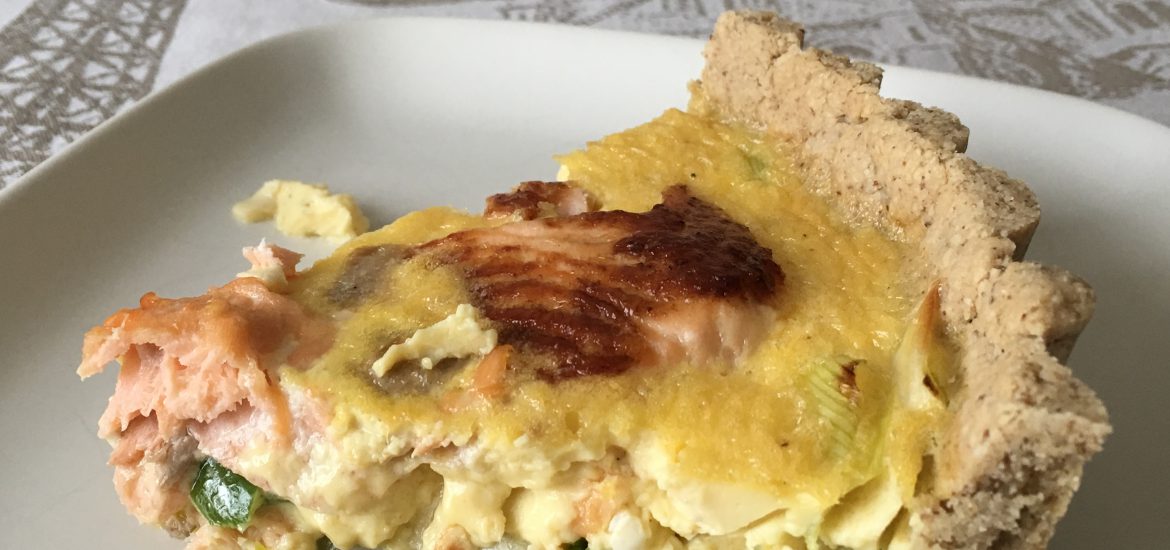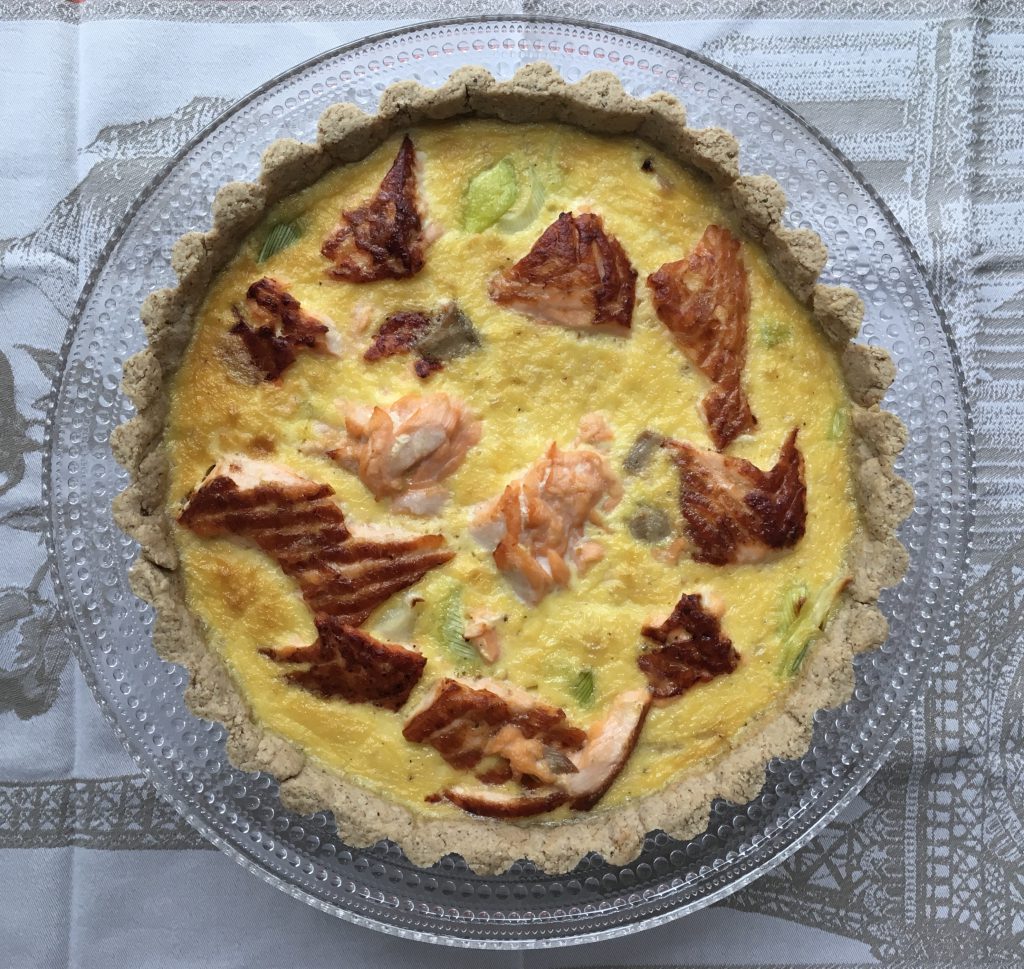
There are a couple of things I try not to make at home if possible. Chips and quiches or tarts are some of those things. I quite like the food I make to turn out like what I imagine it to be in my head and would rather not waste any time in pursuing the impossible.
However I did purchase a quiche tin about two years ago and was at the point of working out the should it stay or should it go question. So I attempted a tart, hoping the crust would be crisp, not being certain as I used a wheat-free and fat-free recipe.
What is the difference between a tart, quiche, flan and pie? Wikipedia says that the categories of ‘tart’, ‘flan’, ‘quiche’, and ‘pie’ overlap, with no sharp distinctions. I guess you can call it whatever you like, depending on your mood and how fancy you want it to sound.
The tart was a first attempt and the recipe below is based on some adjustments after I made it. Mr Gochugaru and I thought it was ok. Junior 2, on the other hand, loved it and asked me for the recipe. So here it is.
The next attempt should be better and this is just a start. May be I should call it a Start Tart.
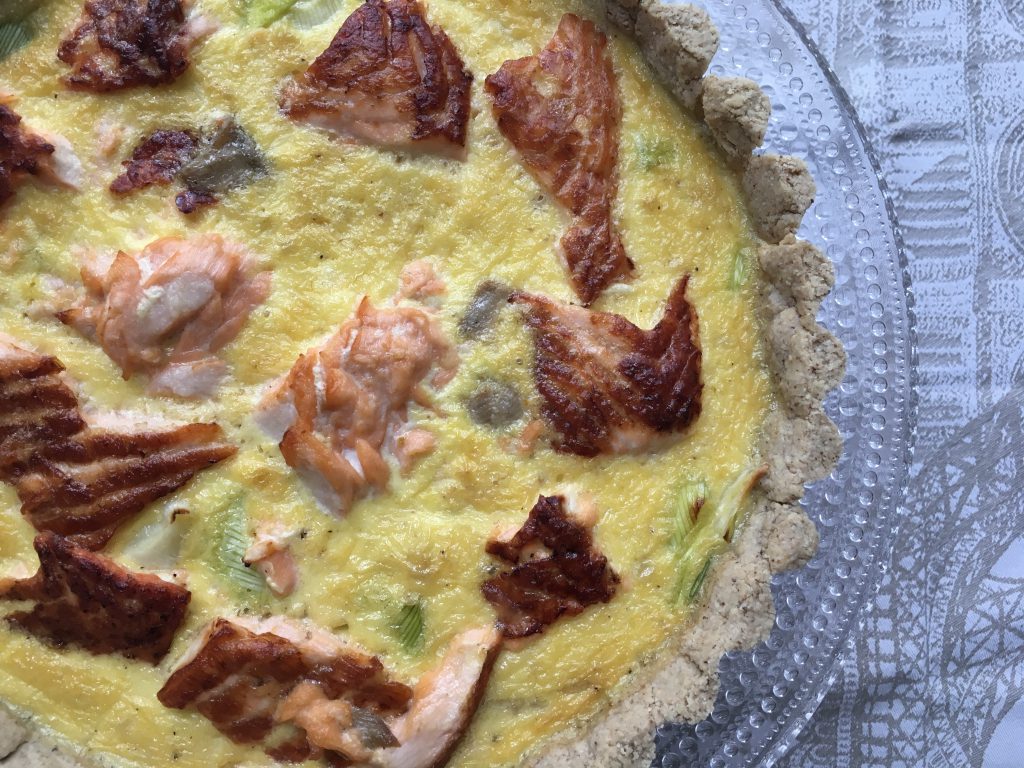
For the Tart:
180 g jumbo oats
85 g whole almonds
60 g fresh parmesan cheese
50 g white sesame seeds
¼ teaspoon salt for the pastry case
95 g water
300 g salmon fillet
300 g leeks, sliced
20 g unsalted butter
150 g whipping cream
30 g milk
4 large eggs
½ teaspoon salt for the filling
¼ teaspoon ground pepper
You will also need a quiche tin with a removable base, 25 cm round with a height of 5 cm. A jar of ceramic baking beans or any dried beans will be useful for baking blind.
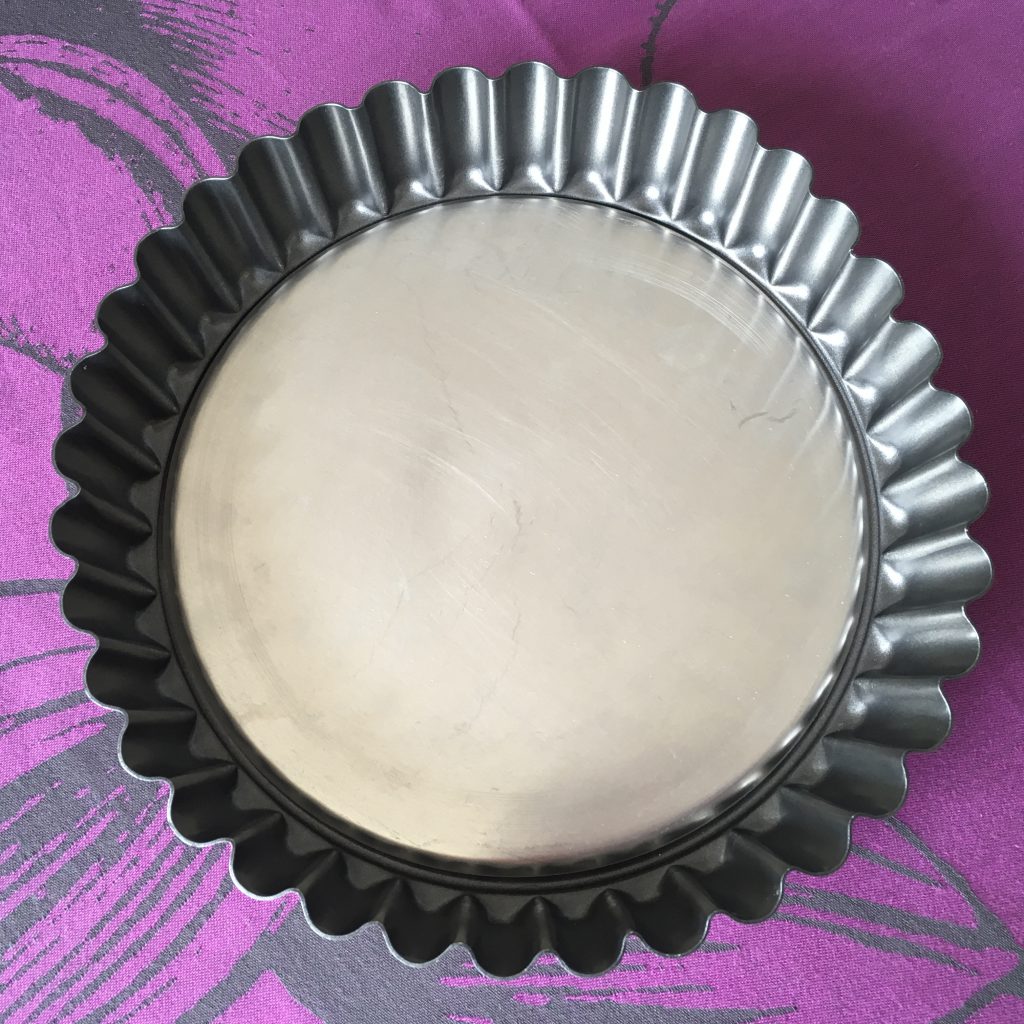
How to Make:
Preheat the oven to 180 C/ 350 F/ Gas 4.
Place the oats, almonds, parmesan cheese, sesame seeds and salt in a food processor and chop for around one minute until the mixture looks really fine. Add in the water and process until the mixture forms a ball.
To make the base of the tart, pinch large bits off the pastry and using your fingers, press the dough into the base and up the sides of the tin. Make sure there are no gaps in the pastry.
Using a fork, prick holes all over the base of the pastry. As I understand it, the reason for doing this is to release moisture when the tart bakes.
Line with baking paper and then pour over the baking beans or real beans. Bake in the oven for 8 minutes.
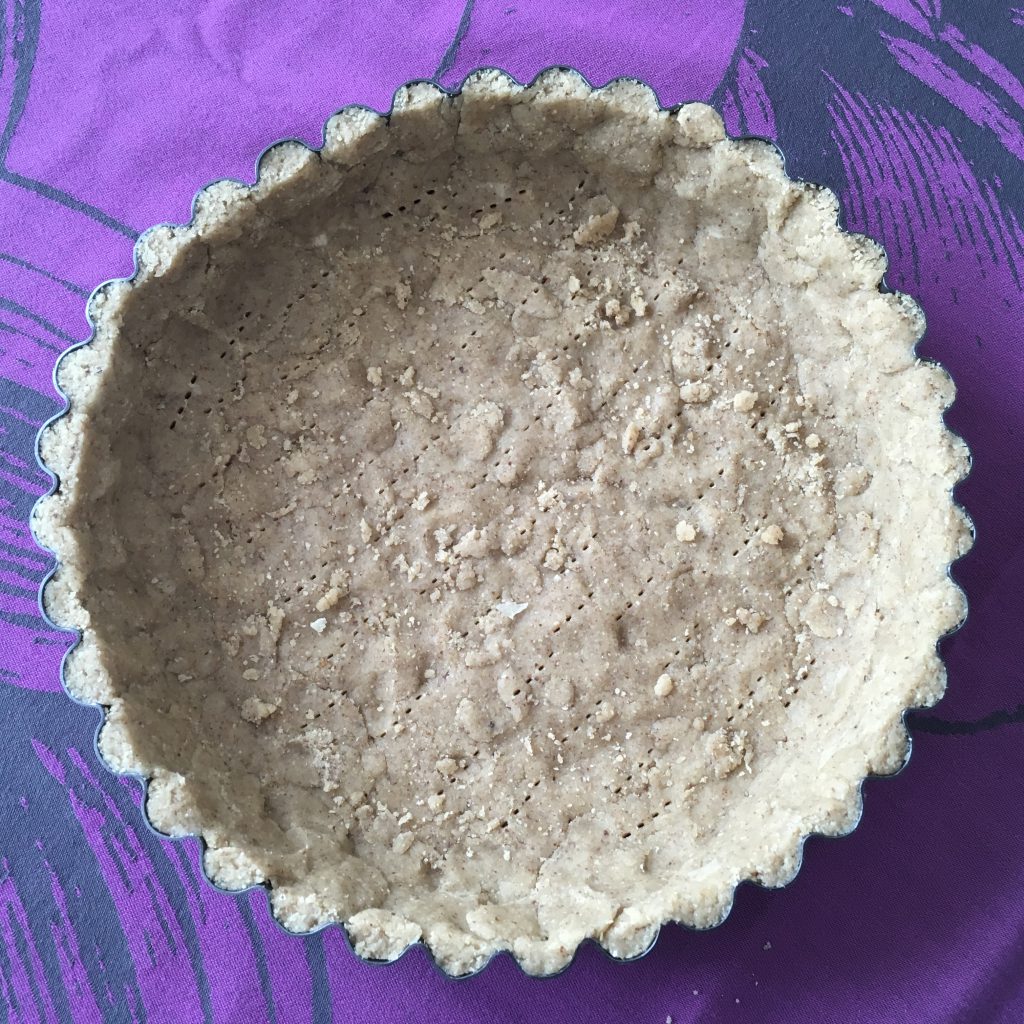

While the tart case is baking, pan fry the salmon on one side to give it some colour. The salmon does not need to cook through. In another pan, fry the leeks in the butter until slightly wilted. Remove the salmon and leeks from the heat when you are happy with the colour.
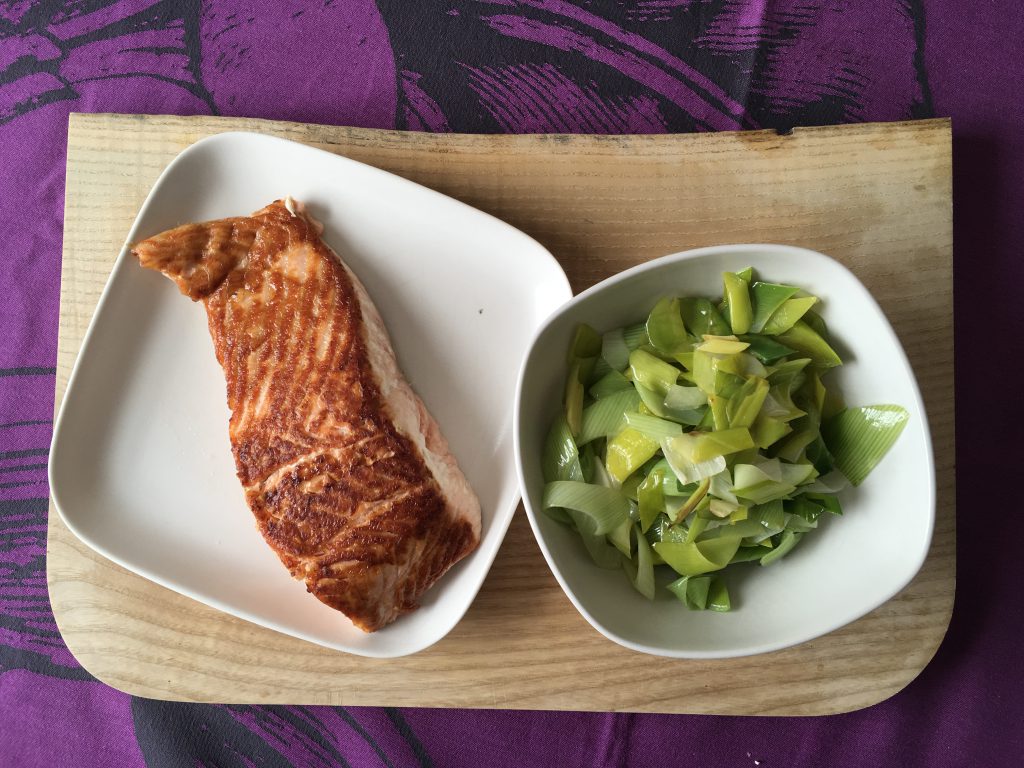
After 8 minutes, remove the tin from the oven and carefully lift off the baking sheet and beans, pouring the beans into a heat-proof container.
Return the tart case to the oven and bake for another 3 minutes.
Remove the tin from the oven and place on a cool surface, then place the salmon and leeks into the tart case.
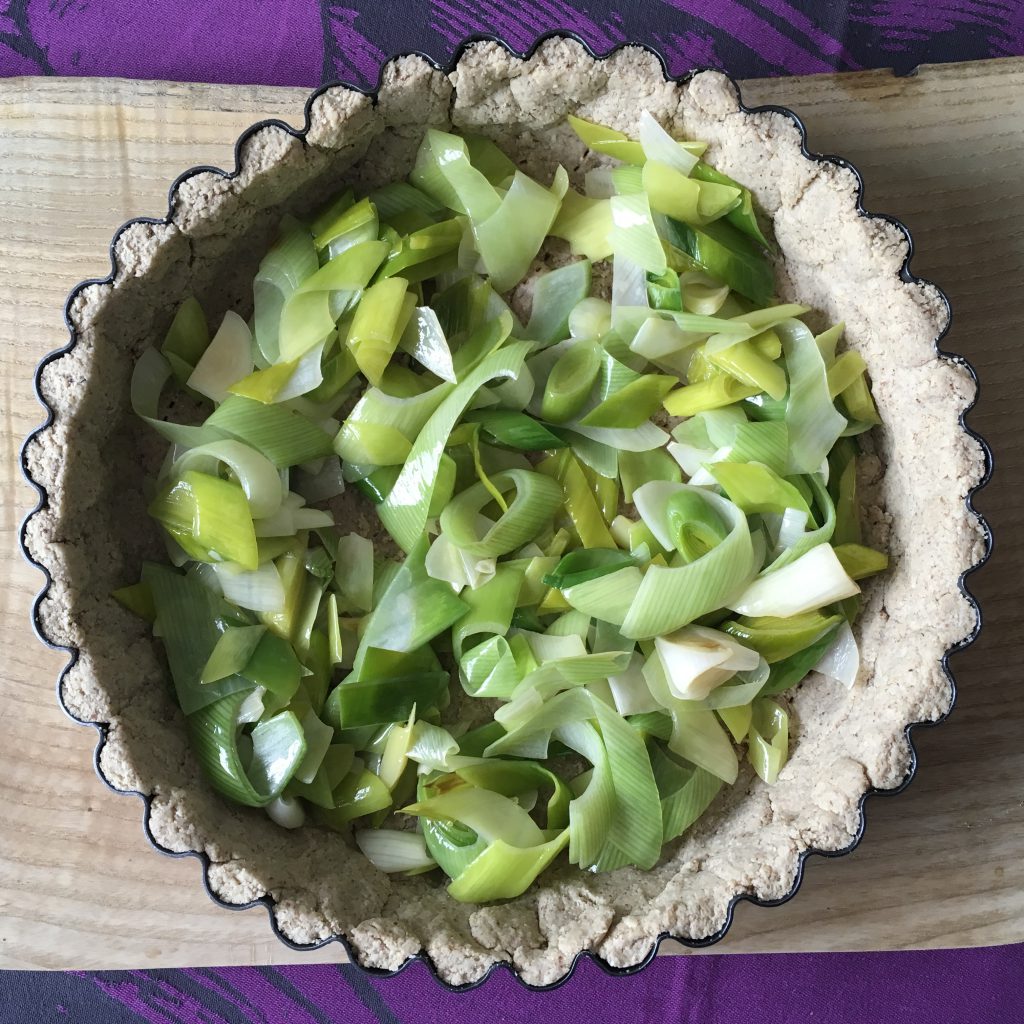
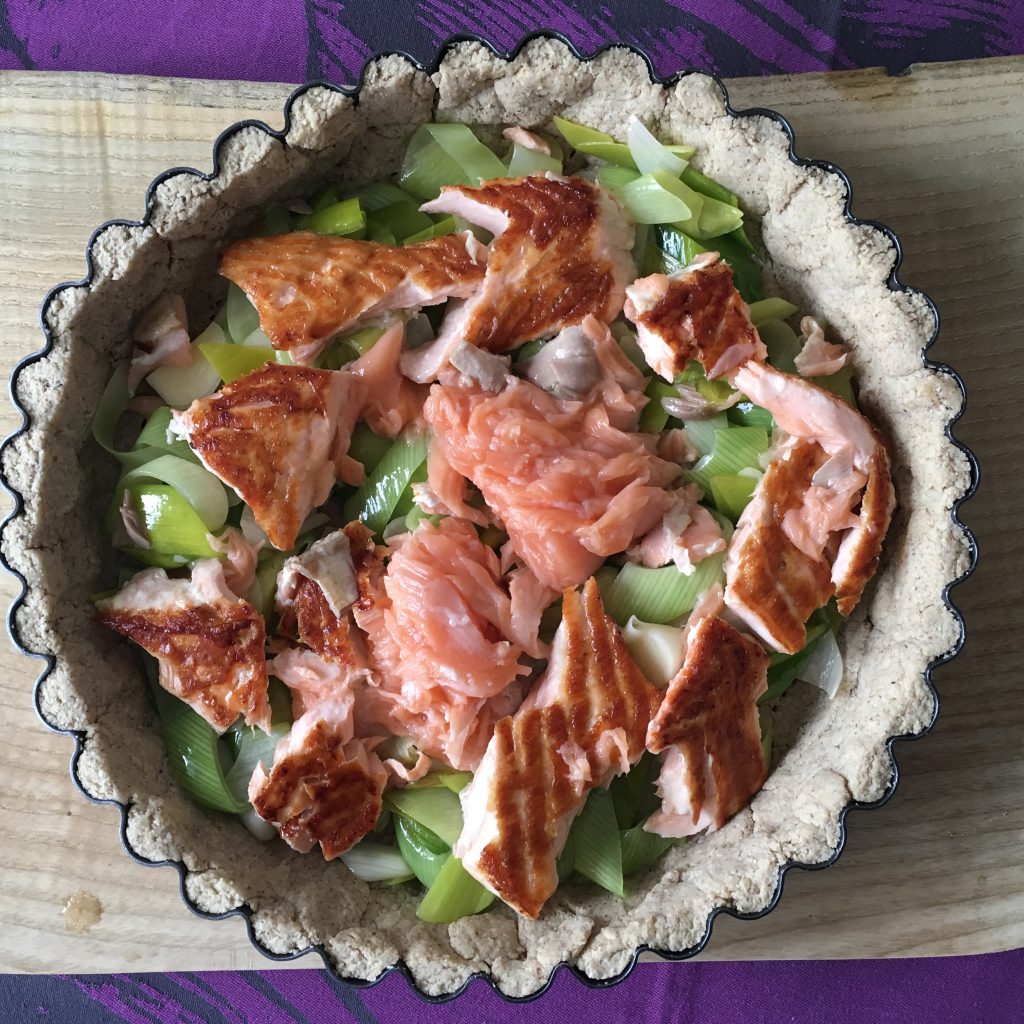
Beat together the cream, milk, eggs, salt and pepper. Pour this into the tart case and carefully lift the tin and place in the oven. Bake for 30 minutes, until the custard is set.
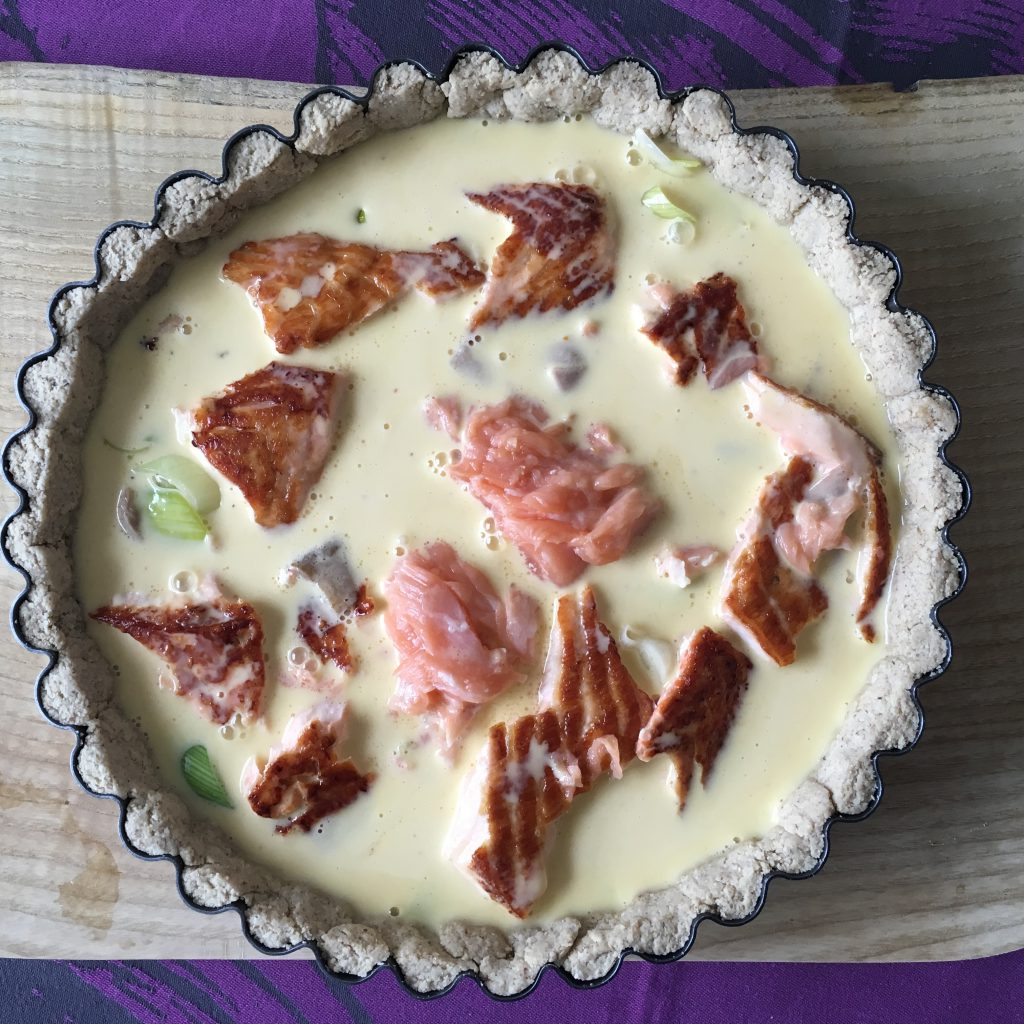
Leave the tart until slightly cooled, around 15 minutes, before removing it from the tin.
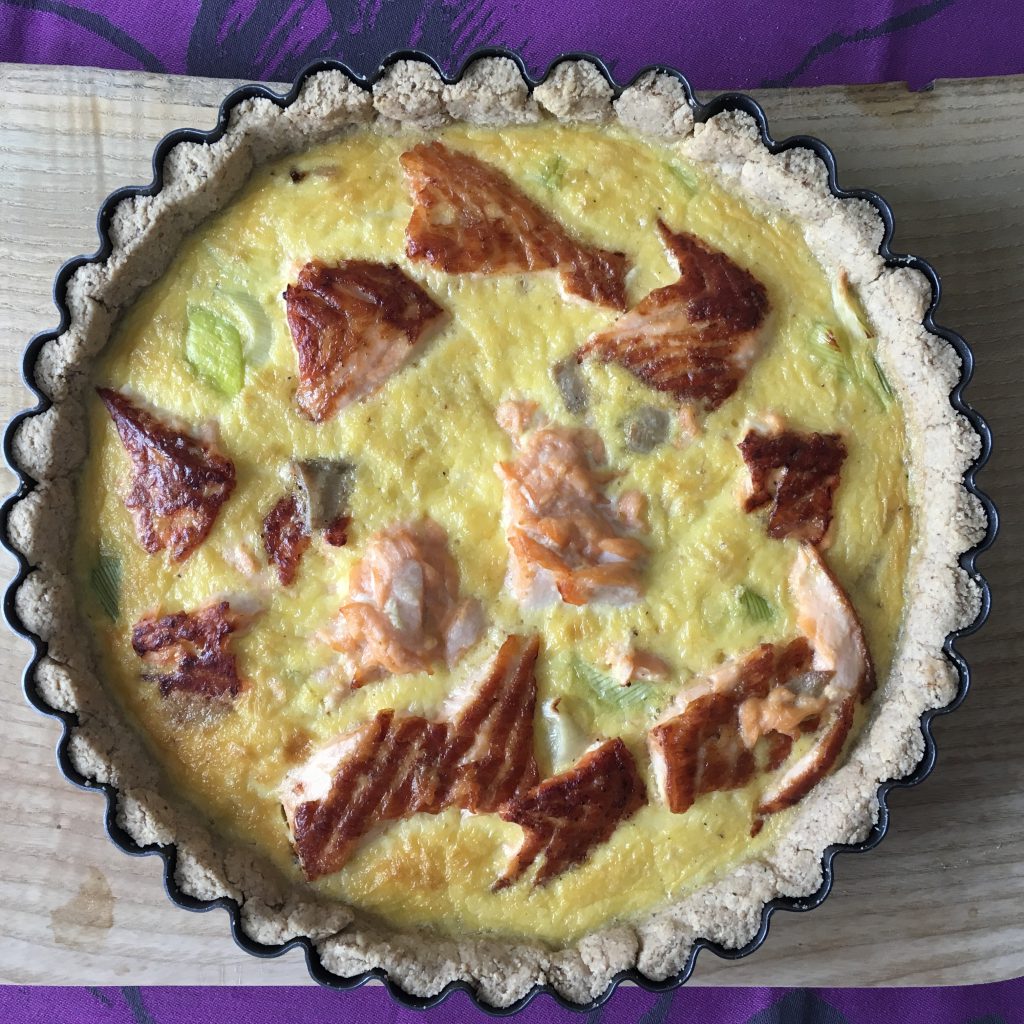
Having made one tart without any disasters, I think I will move on to making a conventional pastry case, that is to say, one with wheat and fat. I will probably use salmon again with perhaps asparagus which should be coming into season soon.

